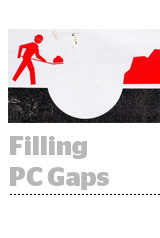 Over the past year, a new breed of data-management platform (DMP) has shown up to provide audience management for app-install campaigns.
Over the past year, a new breed of data-management platform (DMP) has shown up to provide audience management for app-install campaigns.
Mobile DMPs, as they’re sometimes called, are possible because of the availability of device and app identifiers commonly used to track campaign effectiveness.
But these upstarts need to support audience segmentation in other channels. App marketers now routinely advertise in desktop digital media and offline channels. (Think of Liam Neeson in Supercell’s “Clash of Clans” Super Bowl ad.)
To help meet the rising need for true cross-device marketing for app marketers, Apsalar, one of the early movers in the mobile DMP category, has synced up with cross-device measurement firm Tapad, whose so-called device graph spans both PC and mobile web audiences.
Apsalar’s customers will be able to use Tapad’s PC device links to get a fuller view of their app marketing campaigns than was possible before. Those customers have included not only app developers like TripIt and Flipboard, but also some big offline brands that have apps, like Target and 7-Eleven.
Apsalar CEO Michael Oiknine said the deal will “bring the full view of the customer to the client and get more info to clients on what’s happening in other channels.”
Apsalar picked Tapad after a review that also included Drawbridge and Crosswise.
Such deals are becoming more common. According to CEO Are Traasdahl, Tapad has 34 clients either live with its cross-device data product or are testing it, and four of those as “mobile-first.” More mobile-first customers are in the pipeline.
“Our first customers were on desktop side, companies like BlueKai, which is now part of Oracle,” Traasdahl said. “They have the opposite challenge of Apsalar – a lot of cookie data that they wanted to unify with phones and tablets.”
The field of companies positioning as mobile DMPs – including mParticle, Placecast and The Mobile Majority – are less mature than traditional DMPs like BlueKai/Oracle, Lotame and Krux, all of which are investing in mobile tracking. But Apsalar and its peers have one clear advantage: the durability of their measurement currency.
“The app identifiers [and] the device identifiers are much more persistent than cookies, they don’t churn as quickly,” Traasdahl said. “Now they can use that as the anchor and use our cross-device data to tie that data for the consumer to other devices. It’s smart to start with mobile data.”










